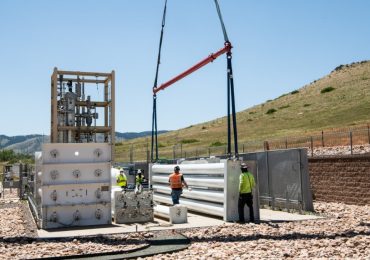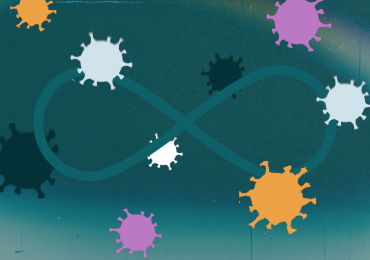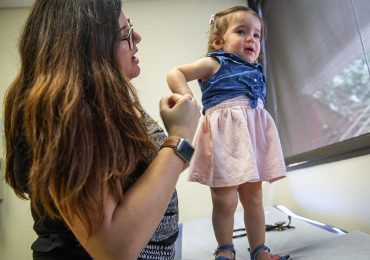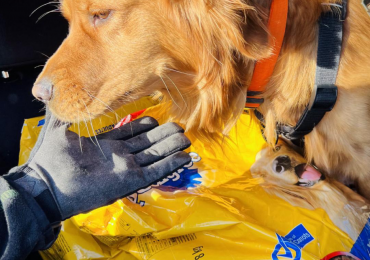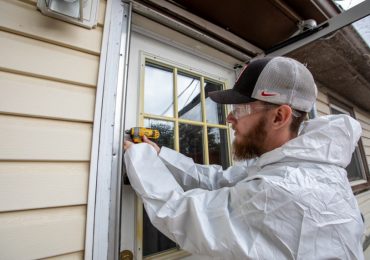Bringing home a puppy is a big life change – for you and for them! In this blog, we’ll be sharing five crucial areas to focus your efforts when training your puppy to set them up for success in their new home.
Socialization
Your puppy is constantly making associations with new experiences, places, things, and people. Socialization is the process of showing your puppy positive associations with the world around them.
At a young age, puppies are more impressionable, and exposing them to new things early will help them be more comfortable in the future. Puppies 6-12 weeks old are in an especially critical socialization period where there is opportunity for the most amount of progress.
Try this:
Before bringing home a puppy, it’s important to discuss what expectations you have for your new furry family member. Do you want to travel? Go camping? Leave your dog with family while you’re away? Understanding your goals will help inform what socialization to focus on with your puppy. This will also help you choose a dog that’s a right fit for your family.
With your goals clearly laid out, you can use primary reinforcers (such as food/treats) to socialize your puppy. Take small steps towards your goals by creating positive associations each step of the way. As your dog ages, proactive socialization continues to be important – your dog is constantly learning! More practical tips here.
Discussing training cues before bringing home your puppy is also important. This will help your family be consistent and set your puppy up for success.
Positive reinforcement
Positive reinforcement is when you add something to your dog’s experience (such as food, toys, or treats) to increase a certain behaviour. By engaging in positive reinforcement, you are actively playing a part in changing your dog’s behaviour. This type of training also provides an opportunity to create a positive association and bond with you.
Try this:
With positive reinforcement, you’re teaching your puppy what behaviours you’d like to see from them.
For example, when training your puppy to jump into the car, positive reinforcement adds something (a treat) every time your dog shows behaviour you want to encourage. First, you can give a treat whenever they move towards the car. Then you can put treats on the car seat and give them a treat when they jump in, etc.
By reinforcing the behaviour you want to see, you’re teaching your puppy to expect good things whenever it’s time to jump in the car. If you force your dog into your car, you can negatively impact their perception of the vehicle, car rides, and possibly you.
Conditioning
Conditioning takes into account the mental health and well-being of your puppy. The goal in this training is to help your puppy learn to enjoy new things, or at least feel neutral towards them. This involves both socialization, and positive reinforcement.
When a dog doesn’t want to do something, the only way they can tell us is through their body language. They may growl, back away, or try and run away. When we push something on them without creating positive associations first, they can start viewing both that thing or experience, and us, in a negative light.
Conditioning early is very important, especially with anything you plan to do with them long term (see practical tips under “Socialization”).
Try this:
Conditioning is about creating positive associations. To help illustrate how this looks practically, we’ll use the example of harness conditioning. Depending on the comfort level of your dog, you may move through these steps slowly or skip certain steps.
Show your dog the harness from a distance, give them a treat, and put it away.
Bring the harness a little closer to your dog, then give them a treat.
Hold the harness in the air so your dog’s head goes through it, and then reward them.
Put the harness on your dog loosely for a few minutes, remove, and reward.
The key is to take the end goal or behaviour (i.e. your dog wearing the harness) and then break it down into incremental steps. Don’t move forward until your current step is successful – either eliciting a happy or neutral response from your dog.
Leash training
It’s important to remember puppies are not innately familiar with wearing a leash and collar (or harness). The more you can do to condition your dog at a young age to the feeling of a leash/collar, and the tension created by the leash, the more success you’ll have as they grow.
Try this:
If you can avoid it, try not to walk your puppy for the first few weeks after they first arrive in your home. Everything is new to them and teaching them to walk on leash while exploring new surroundings can be very overwhelming.
No matter what your dog’s age, positive reinforcement is the most effective way to train. The higher the value of the reward (food, treats, toys), the more success you’ll have in your training. Over time, you’ll be able to reduce the amount of rewards needed to encourage the behaviour you want to see.
For specific tips on training loose leash walking, click here.
Independence training
In this area of training, you are teaching your dog to be comfortable with being independent and/or alone. A lot of people have hybrid working situations, or have to leave their homes daily for work, so it’s important your puppy learns it’s fun and safe to be without their people.
Independence training can also teach puppies to self-soothe, and this can reduce stress when you have to leave for the day, or have a dog sitter come in. The more we regulate independence for dogs and encourage alone time, the fewer issues they will have in the long run.
Try this:
This training also involves creating positive associations. In this case, the associations are with being alone/independent.
Start with short periods of separation and then increase over time. Make the space rewarding with a favourite toy, or a long-lasting reward. This training shouldn’t create heightened stress or fear, so avoid letting them “cry it out.”
Since food is a primary reinforcer for dogs, feeding times are a great opportunity to develop independence training. When you feed them, take the opportunity to walk away, and then come back when they’re finished. This teaches them alone time can be rewarding. Over time, you can slowly increase the amount of time they’re left alone surrounding meal times.
Supporting dogs who need more TLC
These areas of training are a key part of the work happening every day at the Ontario SPCA’s Provincial Dog Rehabilitation Centre in Peterborough. This new facility has been custom built to support VIP dogs (Very Important Paws) who need more individualized care than a typical animal centre can provide to help them get adopted.
Could one of these sweet dogs be the right fit for your family? View VIP animals available for adoption and learn more about the Provincial Dog Rehabilitation Centre on our website.
The post Puppy training basics: 5 key building blocks every puppy parent should know appeared first on Ontario SPCA and Humane Society.
Leave a comment

